Things to Do in Kashan + Videos
In the heart of Iran, Kashan is a captivating city blending ancient stories with modern Persian culture. Famous for its stunning buildings, lush gardens, and rich traditions, Kashan showcases the enduring beauty of Persian heritage. There are many things to do in Kashan.
Kashan’s skyline is filled with impressive buildings from the past, and exploring its vibrant markets and busy streets is like experiencing a living cultural showcase. Every alley tells stories of the past through the warmth of its locals. Let’s travel to the top Kashan places to visit!
Fin Garden
Kashan is well-known for its peaceful Persian gardens, such as the famous Fin Garden, with symmetrical designs and fragrant flowers offering a calming oasis in the middle of dry lands.
Fin Garden in Kashan is a stunning example of Persian garden brilliance. This UNESCO-listed site from the 16th century is a living piece of Iran’s culture. Dating back to the Safavid Empire era, Shah Abbas built Fin Garden as a cool getaway during hot summers. It’s not just beautiful but also practical.
Fin Garden blends nature and architecture, with an ancient water channel called Qanat adding a soothing touch to the whole garden. Pavilions, cypress trees, and flowing water create a peaceful harmony. Reflecting pools enhance the tranquility, and the Shahzadeh Hossein pavilion offers a great view. Persian design principles of symmetry and contemplation are evident.
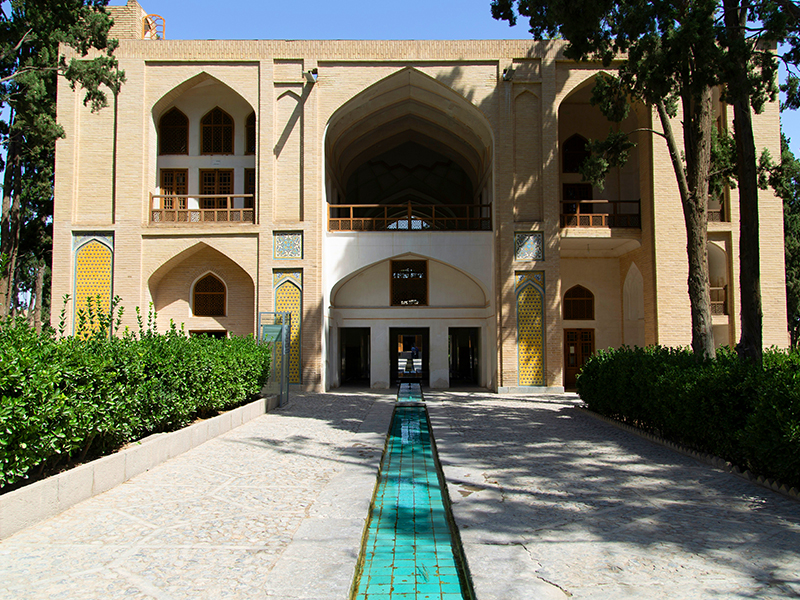
Besides its beauty, Fin Garden has a historical side. It’s where Amir Kabir, a 19th-century prime minister, was reportedly murdered. The garden is a reminder of both nature’s beauty and historical events.
Being on the UNESCO World Heritage List recognizes Fin Garden’s cultural importance. It joins other Persian gardens celebrated for their contribution to garden design art. Overall, Fin Garden has long been one of the top things to do in Kashan, and every visitor adds Fin Garden to their top Kashan places to visit.
Location: Isfahan Province, Kashan, Amir Kabir St (See Location on Map)
Tepe-ye Sialk
The Sialk Hill, also known as “Tepe-ye Sialk,” is a special place in Kashan with a lot of history and culture. It’s located just outside the city and goes way back to before Islam. This ancient spot gives us a peek into the past and how it was connected to the famous Silk Road.
People think that the Sialk Hill was a big town during the Elamite period, which was time around 4000 to 3000 BCE. It was a busy place because it was right on the trade routes where people from different places came to trade stuff and share their cultures.
When people dug into the Sialk Hill, they found all kinds of old stuff like buildings, pottery, tools, and even graves. These things tell us a lot about how people lived and what they did. The hill was in a good spot because it was high up and had a great view all around, making it perfect for a protected town.
One of the coolest things found at the Sialk Hill is a big temple called a Ziggurat. It was like a huge tower where people would worship their gods. Finding this temple shows us what people believed in and how they practiced their religion.
Besides its history, the Sialk Hill is a great place to relax and enjoy nature. It has rough land with olive trees and pretty flowers, perfect for hiking, having picnics, and taking pictures.
Today, the Sialk Hill reminds us of Kashan’s past and how it was a hub where different cultures met. Whether you’re exploring its old ruins, looking at the beautiful views, or just enjoying the calm atmosphere, visiting the Sialk Hill lets you take a trip through time and see the magic of this historic place.
Location: Kashan, Isfahan Province (See Location on Map)
Abbasi House
Abbasi House, or “Khan-e Abbasi,” is a prime example of traditional Persian architecture in Kashan, dating back to the late 18th century. Let’s explore its highlights:
The symmetrical designs, delicate stuccowork, and elaborate stained glass windows of Abbasi House showcase the intricate beauty of Persian architecture. Interconnected courtyards and meticulous craftsmanship create a refined atmosphere.
Witnessing centuries of history, Abbasi House echoes tales from the Qajar era. Hosting influential figures and significant events, it offers insights into the affluent residents’ lifestyle, reflecting the wealth and taste of the time.
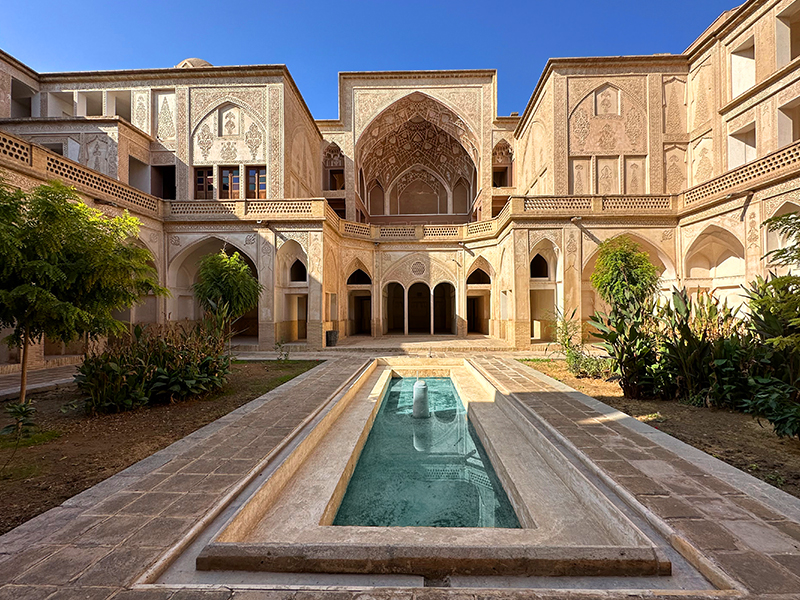
The mansion’s standout feature is its magnificent stained glass windows adorned with vibrant colors and intricate patterns. Sunlight filtering through creates enchanting reflections, enhancing the overall allure.
Abbasi House, drawing tourists worldwide, is an impressive tribute to Iran’s cultural and architectural heritage. Guided tours offer an immersive experience for those intrigued by Persian history and design.
Location: Isfahan Province, Kashan, Alavi St (See Location on Map)
Borujerdi House
The Borujerdi Houses, also called Borujerdiha, are famous buildings in Kashan. They are well-known for their beautiful design and important history. Inspired by traditional architecture from Lorestan province, these houses have both wood and stone parts with detailed patterns.
Rich merchants and landowners built them in the 19th century from the Borujerdi family. This showed how wealthy the family was and how much they liked art and architecture. The houses were meant for living in and for business, with big yards, nice rooms, and fancy halls.
One special thing about the Borujerdi Houses is their fancy fronts. They have fancy plaster, carved wood, and colorful tiles. People worked really hard to make each part look beautiful. The house interiors are so lovely, with high ceilings, detailed plaster, and fancy wood doors and windows.
The Borujerdi Houses aren’t just pretty buildings; they also tell us about Kashan’s history and culture. They were places for parties and events where the Borujerdi family and their friends got together. They were also important for business in Kashan, with shops and workshops inside. Today, they are popular places for tourists to visit and learn about Iran’s great buildings.
Location: Isfahan Province, Kashan, Alavi St, Bastan 10 St (See Location on Map)
Tabatabaei House
The Tabatabaei House, also known as Khan-e Tabatabaei, is a remarkable building in Kashan. It’s famous for its fancy design and important history.
Built in the 19th century, the Tabatabaei House was made for a rich merchant named Seyyed Jafar Tabatabaei. It was a way to show how rich and important the Tabatabaei family was in Kashan. Skilled workers made sure every part of the house was amazing.
Inside, it’s astonishing, with big rooms, tall ceilings, and fancy halls decorated with Persian rugs, fancy furniture, and detailed wood doors and windows.
One special thing about the Tabatabaei House is its big courtyard in the middle. It’s surrounded by pretty arches and has gardens, fountains, and water features. It was a nice place for the family and their guests to hang out, have parties, and do cultural stuff.
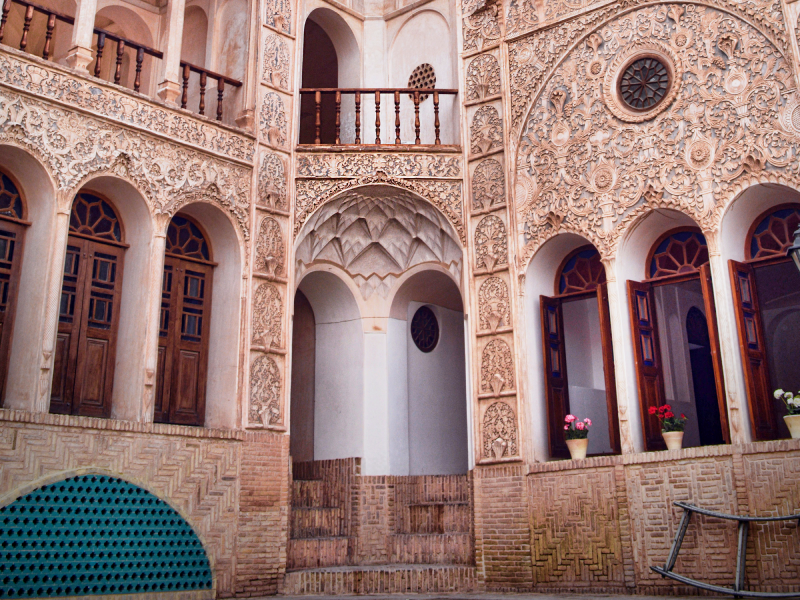
The Tabatabaei House shows us a lot about Kashan’s culture and architecture. It’s an important part of the city’s history and a cool place for tourists to visit. Through its fancy design and beautiful interior, the Tabatabaei House gives us a cool look into Iran’s great culture.
Location: Isfahan Province, Kashan, Alavi St (See Location on Map)
Agha Bozorg Mosque
The Agha Bozorg Mosque is a really special place in Kashan. It’s famous for being so beautifully designed and holds a lot of importance for the people there.
It was built a long time ago, in the late 1700s, by Agha Bozorg-e Kashani, who was a well-known religious leader. The person who designed it, Ustad Haj Sa’ban-Ali, was really good at his job and made sure to include traditional Persian styles in how the mosque looked.
The mosque looks amazing from the outside, with pretty tiles, fancy writing, and cool shapes all over the front. The entrance is really grand, with tall towers and colorful tiles, making it feel special. Inside, the prayer hall is huge, with tall arches, nice pillars, and lots of decorations on the walls.
What makes this mosque unique is its two big halls on either side of the courtyard. They’re decorated with beautiful tiles and plasterwork and are great places for people to gather and pray. The courtyard itself is a perfect spot for quiet reflection.
The Agha Bozorg Mosque is not just a pretty building but also a place where they go to pray and feel connected to their faith. Tourists from all over the world come to see it because of its beauty and history.
Location: Isfahan Province, Kashan, Agha Bozorg Mosque St (See Location on Map)
Ameri House
The Ameri House, also known as “Khan-e Ameriha,” is a special place in Kashan. It’s an old inn that tells a lot about the city’s history and how beautiful its buildings are. It’s been around since the Safavid era, which was a long time ago. It gives us a peek into how fancy and welcoming it was back then.
Built in the late 1600s, the Amery House was meant to be both a home and a place for travelers to stay while they were passing through Kashan. So tired travelers could find a nice place to relax and rest.
The design of the Amery House is gorgeous, with everything looking balanced and neat. The entrance is really fancy, with cool carvings and colorful tiles.
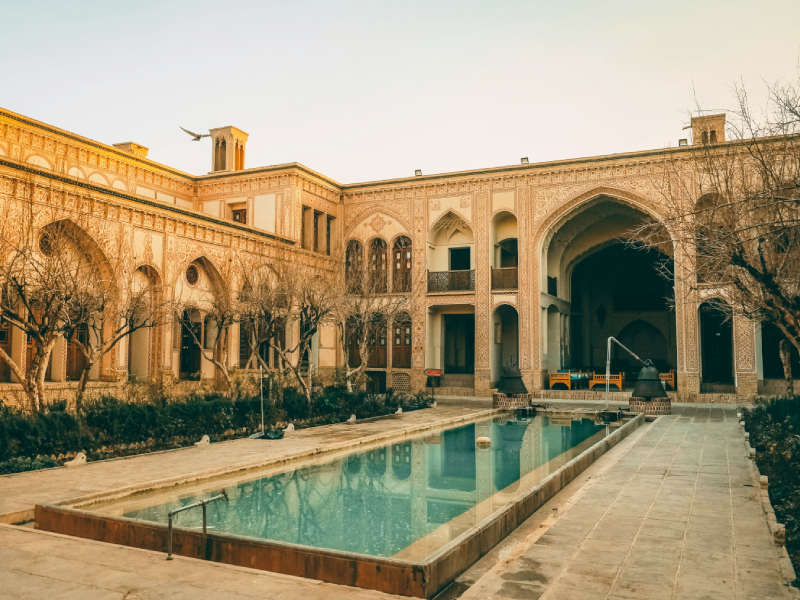
Inside, there’s a big courtyard surrounded by rooms where guests could sleep, areas to hang out, and spots to meet other travelers. The courtyard is really peaceful, with gardens, fountains, and shady places to sit.
Each room in the Amery House is fascinating, with comfy furniture, elegant rugs, and pretty decorations that make it feel fancy. It shows how people lived and what they liked during the Safavid era. It’s like a mix of Persian, Islamic, and Central Asian styles that all come together nicely.
Over the years, the Amery House has seen a lot of travelers from different places, which helped bring people together and share their cultures. Today, it’s like a time machine that takes us back to Kashan’s past. It shows us how welcoming people were back then.
Whether you’re exploring its old buildings, admiring its beautiful details, or just enjoying the peaceful vibe of the courtyard, the Amery House is a place that always leaves a lasting impression on anyone who visits.
Location: Kashan, Alavi Street, Bastan 7 St (See Location on Map)
Aminoddole Caravanserai
Located in Kashan, Aminoddole Caravanserai of Kashan Bazaar is a captivating historical place reflecting the vibrant trade and cultural exchange along the Silk Road. Constructed during the Safavid era, it served as a vital hub for merchants and travelers, providing accommodation, security, and trading facilities.
The caravanserai is an architectural marvel with an imposing entrance gate adorned with intricate tilework and calligraphy. Its spacious courtyard, designed for both humans and animals, evokes the bygone era’s essence.
Playing a crucial role in Kashan’s commercial activities, the caravanserai housed various stalls and shops where merchants traded goods, creating a vibrant atmosphere of commerce and cultural mingling.
Characterized by vaulted ceilings and strategically placed openings for ventilation, the caravanserai’s design aimed for a secure and hospitable environment. Efforts have been made to preserve and restore it in recent years, turning it into a tourist attraction that allows visitors to envision the vibrant trade of the past.
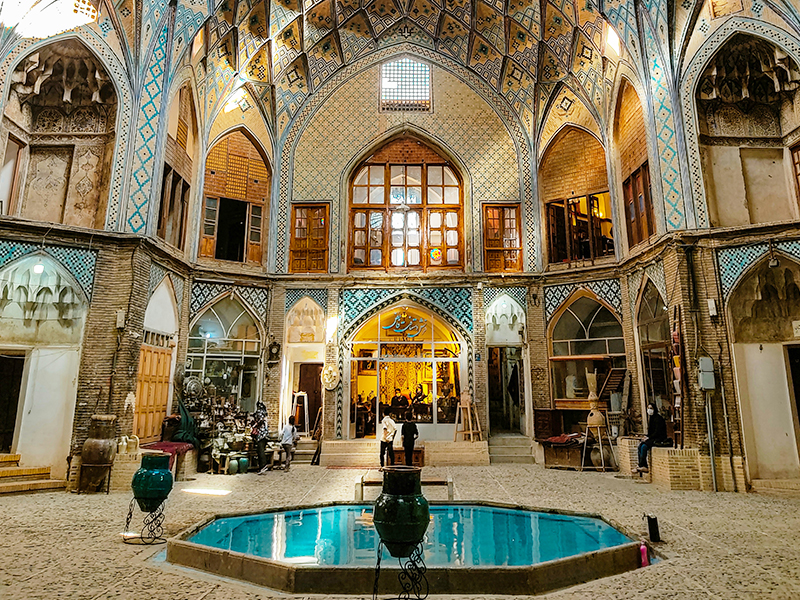
Beyond its commercial importance, the caravanserai symbolizes the cultural crossroads of the Silk Road. Merchants from different regions converged here, exchanging goods, ideas, languages, and traditions. With its rich history, the caravanserai represents the cosmopolitan nature of Silk Road trade routes.
Location: Kashan, Within the Grand Bazaar of Kashan between Baba Afzal and Mohtasham streets (See Location on Map)
Sultan Amir Ahmad Bathhouse
In Kashan, the Sultan Amir Ahmad Bathhouse, also known as the Qasemi Bathhouse, stands as a significant symbol of regional culture and architecture.
Constructed during the Safavid era, this bathhouse served as a communal space for cleansing, socializing, and relaxation, highlighting the importance of public bathhouses in Persian culture for both hygiene and community bonds.
The bathhouse features remarkable Persian architecture with detailed tilework, geometric patterns, and vaulted ceilings. The entrance, adorned with colorful tiles, seamlessly blends beauty and function.
Sultan Amir Ahmad Bathhouse, designed with separate sections for various bathing rituals, including the changing room, cooling room, and hot chamber, incorporates skylights and well-placed openings for natural light and privacy.
Turquoise tiles with geometric and floral designs turn the bathhouse into an artful sanctuary, showcasing the skill of Safavid artisans and enhancing its visual appeal.
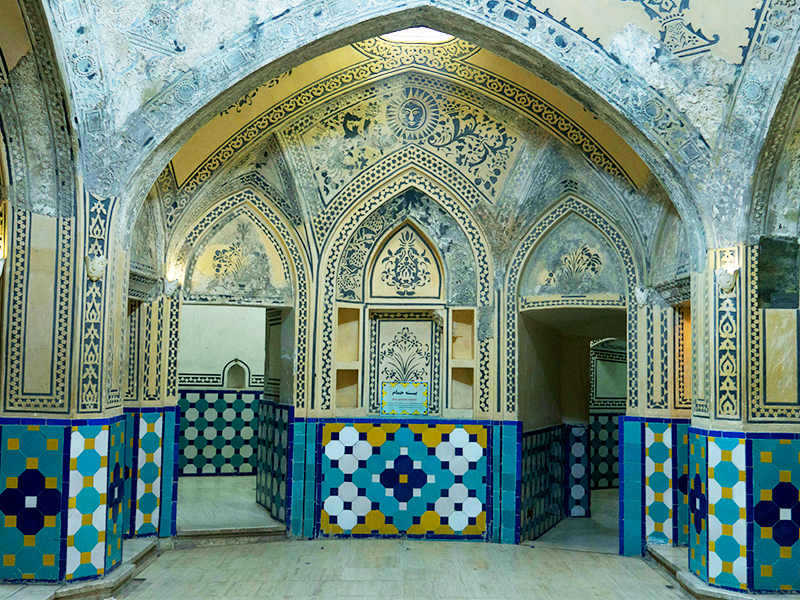
Having undergone restoration, the Sultan Amir Ahmad Bathhouse has been transformed into a museum, providing an immersive experience of Safavid-era bathing rituals and architecture. It displays artifacts and exhibits offering insights into daily life.
As a significant historical site, the bathhouse attracts tourists worldwide due to its cultural and architectural importance. The opportunity to explore Persian bathhouse culture makes it a must-visit destination in Kashan.
Location: Isfahan Province, Kashan, Alavi St (See Location on Map)
Abyaneh Village
Abyaneh, near Kashan, is a living tribute to the country’s history, culture, and architecture, maintaining its unique character for centuries.
Abyaneh stands out with its sea of red mud-brick houses, built with local red soil for natural insulation, showcasing the villagers’ adaptation to the region’s climate.
Famous for residents wearing traditional attire, the women of Abyaneh wear vibrant floral dresses, and men wear traditional baggy pants and colorful vests, reflecting cultural identity and local craftsmanship.
Exploring Abyaneh’s narrow lanes allows interactions with friendly locals preserving ancient customs, providing insight into centuries-old traditions and ceremonies.
Residents warmly welcome visitors, fostering conversations that deepen understanding of the village’s history, customs, and challenges, creating a cultural bridge connecting the past with the present.
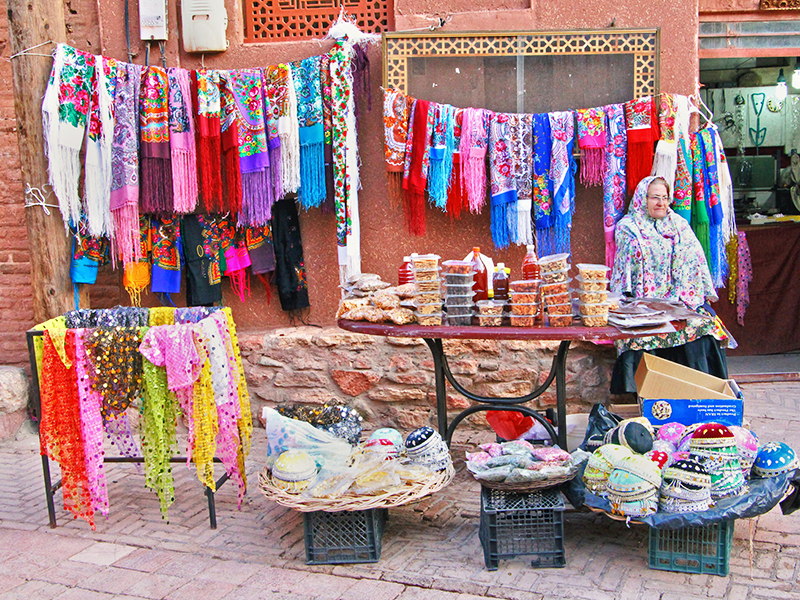
With roots spanning over a thousand years, Abyaneh’s cultural richness is evident in its architecture, cobbled streets, and ancient structures like the Jame Mosque and Zoroastrian fire temple remnants.
Situated in the Karkas Mountains, Abyaneh offers breathtaking views of red houses against rugged mountains, attracting photographers, historians, and cultural enthusiasts to its picturesque setting.
Location: Access by Kashan-Natanz route or Kashan-Isfahan freeway (See Location on Map)
Nushabad
The underground city of Nushabad, also known as “Shahr-e Zirzamin-e Nushabad” in Kashan, is a remarkable example of human cleverness and toughness. Dug deep into the ground, this ancient underground place gives us an interesting look into how people lived and survived in a tough desert.
Nushabad’s underground city is pretty ancient, over a thousand years old. People used it as a safe place to hide during wars, attacks, and when the weather got really bad. Its maze of tunnels and rooms helped people stay safe, store things, and stay away from danger.
It’s believed that the underground city was first dug during the Sassanian time, and then people kept adding to it over the years, especially during the Islamic period. The tunnels and rooms are like a big puzzle under the ground, showing how smart and skilled the builders were.
One cool thing about the underground city is how they made sure there was fresh air down there. They built special shafts and ducts to bring in air and keep the temperature comfortable, even when it was super hot outside.
Nushabad’s underground city was also a hub for people to live, pray, and do business. Archaeologists found evidence of homes, kitchens, workshops, and places for people to hang out. It shows that it was a busy and organized community.
Today, Nushabad’s underground city is like a hidden treasure. Visitors can explore the tunnels, see the cool architecture, and imagine what life was like for the people who lived underground.
Location: 5 Kilometers North of Kashan (See Location on Map)
Maranjab Desert
In Iran, the Maranjab Desert, located in Isfahan Province near Kashan, showcases diverse landscapes, captivating adventurers and nature enthusiasts. Here is one of the top things to do in Kashan if you’re looking for some adventure.
Vast, endless golden sand dunes shaped by the wind create mesmerizing patterns, making Maranjab a paradise for photographers and those seeking a peaceful escape.
Maranjab features a captivating salt lake and expansive sand dunes, creating a surreal scene with the contrast between white salt and the desert. The lake, occasionally filled with water, adds extra beauty.
The Maranjab Caravanserai, a historic Silk Road stop, reflects the area’s trade importance, providing shelter for travelers and their caravans.
Contrary to desert stereotypes, Maranjab hosts diverse plants and animals adapted to harsh conditions, contributing to biodiversity.
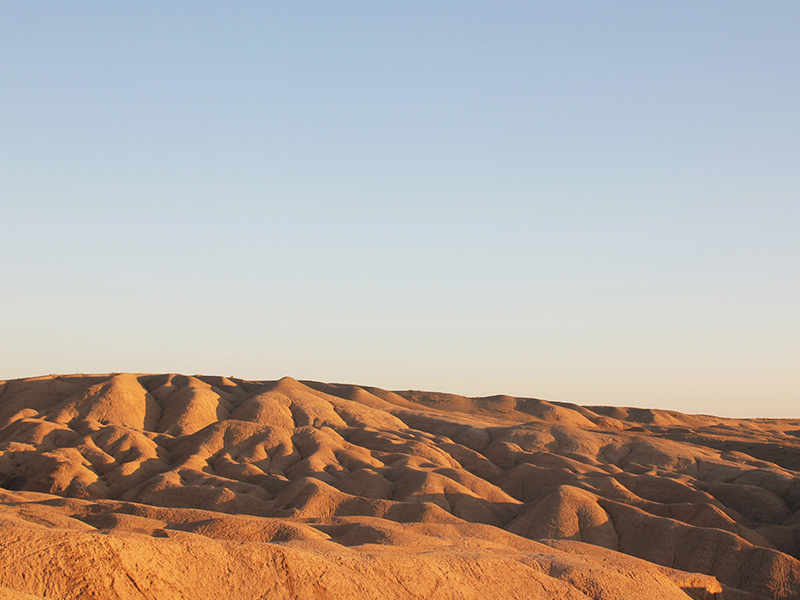
Maranjab’s night sky becomes a canvas filled with countless stars at sunset. Camping in the desert offers a chance to witness the Milky Way and enjoy the nighttime tranquility.
Ideal for off-road enthusiasts, Maranjab’s undulating terrain is perfect for desert safaris in 4×4 vehicles, exploring remote corners and sandy terrain.
A popular destination, the Maranjab Desert offers a unique escape from city life. Guided tours, camping experiences, and photography excursions allow visitors to fully immerse themselves in the desert’s natural wonders.
Location: in Aran va Bidgol (See Location on Map)
Conclusion
In summary, exploring the top Kashan places to visit goes beyond conventional tourism—it’s a dive into a cultural tapestry woven with history, architecture, and culinary delights. From UNESCO-listed Fin Garden to the ancient village of Abyaneh, each spot tells a timeless story. Architectural marvels like Abbasi House and Aminoddole Caravanserai showcase the artistic brilliance of a bygone era, while the tranquil Maranjab Desert invites stargazers.
Kashan invites travelers to explore its historical wonders, engage with the local culture, and savor its diverse cuisine. By delving into Kashan’s history and experiencing its beauty, visitors can leave with a deeper understanding and appreciation for what makes this destination truly special.

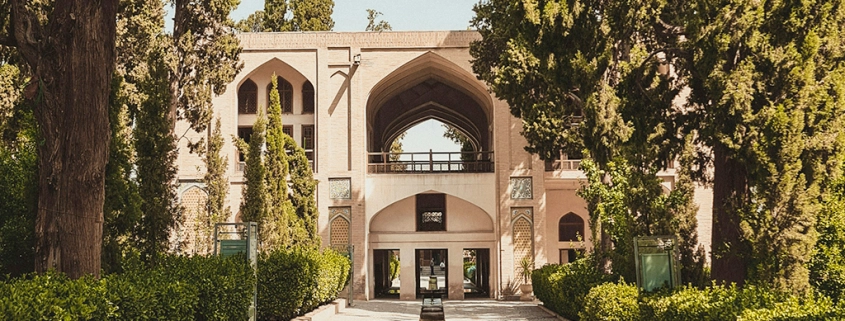



Leave a Reply
Want to join the discussion?Feel free to contribute!